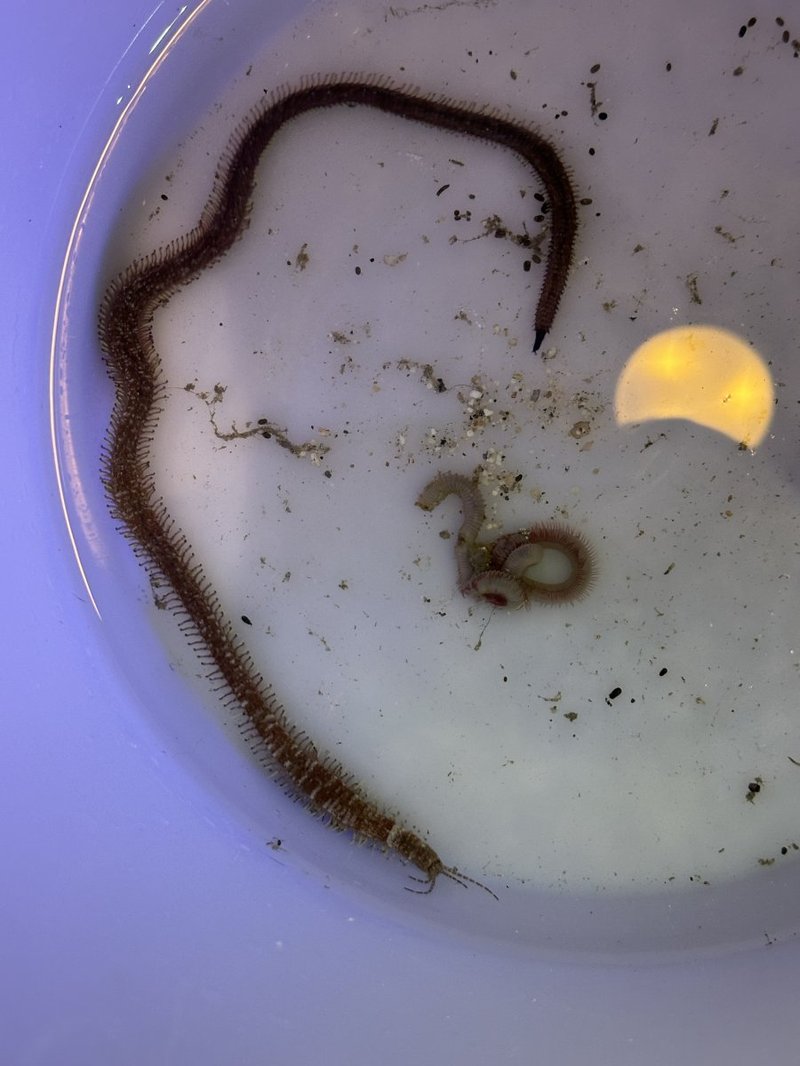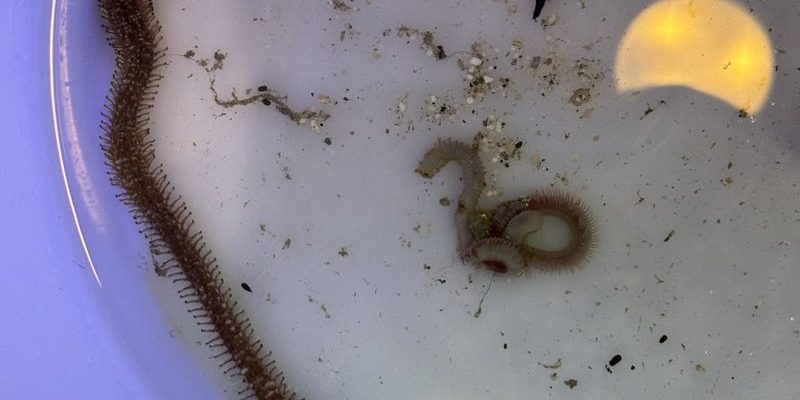
Bobbit worms are fascinating yet potentially harmful creatures that can wreak havoc on your reef tank if you’re not careful. When they invade, they may munch on your prized corals or fish, leading to some unfortunate surprises. In this post, let’s explore how to spot the signs of a Bobbit worm and what actions you can take if you suspect one has made your tank its home.
What Exactly is a Bobbit Worm?
Bobbit worms (scientifically known as *Eunice aphroditois*) are long, segmented worms that can grow up to 10 feet in length, although they usually stay around 3 feet in captivity. These creatures are named after the infamous Lorena Bobbitt due to their habit of grabbing unsuspecting prey and, in a figurative sense, “biting” off more than they can chew. You might be wondering why they are causing such a stir in the aquarium community. Well, here’s the thing: they can be aggressive hunters and can pose a threat to smaller fish and corals.
These worms are usually nocturnal, which means they come out at night to hunt. During the day, they prefer to hide in their burrows, blending in with the substrate. Their natural camouflage allows them to ambush prey effectively, so just because you don’t see them doesn’t mean they’re not lurking. As a medium to large-sized worm, they have a stout body covered in bristles that can deliver a painful sting, adding to their fearsome reputation.
Common Signs of a Bobbit Worm in Your Tank
When it comes to identifying a Bobbit worm, there are a few signs you should look out for. It’s not always as simple as spotting the worm slithering around; sometimes, clues are much more subtle. Here’s a list of things to watch for:
- Strange Behaviors of Fish: If your fish are acting skittish or suddenly hiding more than usual, it could be a red flag.
- Damage to Corals: You might notice your corals looking nibbled or even missing small parts.
- Visible Burrows: Bobbit worms often create these long, slender holes in the substrate—almost like tiny tunnels.
- Mystery Disappearances: If fish or invertebrates go missing without a trace, it’s worth investigating.
These signs may be subtle but can indicate that a Bobbit worm is making its presence known in your reef tank. Keep a lookout, especially during feeding times when your fish are more active.
Behavior and Habitat Preferences
Understanding the behavior and habitat of Bobbit worms can help you spot them more easily. As nocturnal hunters, Bobbit worms come alive when the lights go down. They ambush their prey with quick, swift motions. You might see *just* a few bristles or the tail end of the worm peeking out of its burrow if you’re looking closely at night.
Their preferred habitat is sandy substrates where they can easily dig in and create their burrows. They can also conceal themselves within live rock, making them even trickier to find. This means you might not spot them until they’re already causing problems in your reef tank.
If you suspect you have a Bobbit worm, pay attention to your tank’s activity when the sun sets. You might catch a glimpse of them extending out into the water, searching for their next meal. This behavior can give you a clearer indication of their presence.
How to Confirm the Presence of a Bobbit Worm
So, you think you’ve spotted a Bobbit worm? It’s time to confirm! Here’s how you can investigate further:
1. Inspect the Substrate: Look closely at the sand bed for any long, snake-like burrows. These can often be several inches deep and are a sure sign of a Bobbit worm.
2. Monitor Fish Behavior: Keep an eye on your fish during feeding time. Are they behaving differently or shying away from certain areas of the tank? This could indicate the presence of a predator nearby.
3. Nighttime Observations: If you can, use a flashlight after dark to carefully observe your tank. Shine a light on areas where you suspect the worm might be hiding, and see if you can catch any movement.
If you do find a Bobbit worm, your next steps are crucial. Don’t panic; instead, gather information and prepare to take action.
Dealing with a Bobbit Worm: Next Steps
If you confirm the presence of a Bobbit worm in your reef tank, there are several options for handling the situation:
- Manual Removal: Some aquarists successfully remove Bobbit worms by carefully pulling them out of their burrows. However, this can be tricky and may require patience and some finesse.
- Using Traps: You can create a simple trap using bait. Place something enticing, like shrimp or fish food, near the suspected entry point, and wait for the worm to emerge.
- Consider Alternatives: If the situation worsens and you feel overwhelmed, you might consider getting professional help or advice from local aquarists.
Always remember that hastily removing a Bobbit worm can cause stress to your tank’s ecosystem, so weigh your options carefully.
Preventing Bobbit Worms in Your Reef Tank
Once you’ve dealt with a Bobbit worm, the next step is to prevent future invasions. Here are some preventive measures you can take:
1. Quarantine New Additions: Before adding new fish or corals to your tank, quarantine them for a few weeks. This minimizes the risk of introducing unwanted pests.
2. Inspect Live Rock: If you’re using live rock, inspect it closely for any signs of Bobbit worms or other pests before adding it to your tank.
3. Maintain Water Quality: Keeping your water parameters stable can promote healthy tank inhabitants and may discourage the establishment of predators.
4. Regular Maintenance: Regularly cleaning your tank and monitoring fish behavior can help you catch any issues before they escalate.
Taking these preventive actions can help keep your reef tank healthy and happy, reducing the chances of Bobbit worms or other pests ruining your aquatic paradise.
Bobbit worms may seem intimidating, but knowing the signs and how to handle them can empower you as an aquarist. By staying vigilant, monitoring your tank closely, and taking preventive measures, you can enjoy a thriving reef ecosystem without the anxiety of hidden predators. Remember, every reef tank tells its own story, and understanding its inhabitants—both good and bad—will help you maintain the balance. Keep learning and observing, and your underwater world will flourish!

